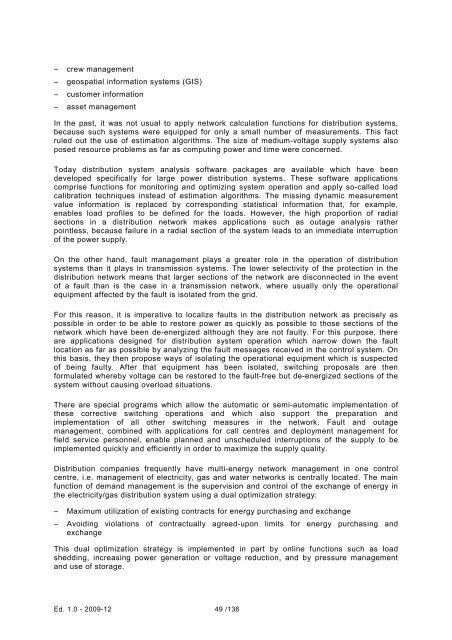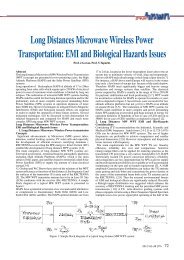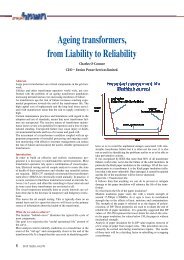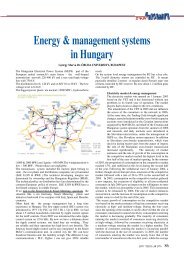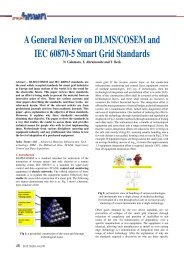IEC Smart Grid Standardization Roadmap
IEC Smart Grid Standardization Roadmap
IEC Smart Grid Standardization Roadmap
You also want an ePaper? Increase the reach of your titles
YUMPU automatically turns print PDFs into web optimized ePapers that Google loves.
– crew management– geospatial information systems (GIS)– customer information– asset managementIn the past, it was not usual to apply network calculation functions for distribution systems,because such systems were equipped for only a small number of measurements. This factruled out the use of estimation algorithms. The size of medium-voltage supply systems alsoposed resource problems as far as computing power and time were concerned.Today distribution system analysis software packages are available which have beendeveloped specifically for large power distribution systems. These software applicationscomprise functions for monitoring and optimizing system operation and apply so-called loadcalibration techniques instead of estimation algorithms. The missing dynamic measurementvalue information is replaced by corresponding statistical information that, for example,enables load profiles to be defined for the loads. However, the high proportion of radialsections in a distribution network makes applications such as outage analysis ratherpointless, because failure in a radial section of the system leads to an immediate interruptionof the power supply.On the other hand, fault management plays a greater role in the operation of distributionsystems than it plays in transmission systems. The lower selectivity of the protection in thedistribution network means that larger sections of the network are disconnected in the eventof a fault than is the case in a transmission network, where usually only the operationalequipment affected by the fault is isolated from the grid.For this reason, it is imperative to localize faults in the distribution network as precisely aspossible in order to be able to restore power as quickly as possible to those sections of thenetwork which have been de-energized although they are not faulty. For this purpose, thereare applications designed for distribution system operation which narrow down the faultlocation as far as possible by analyzing the fault messages received in the control system. Onthis basis, they then propose ways of isolating the operational equipment which is suspectedof being faulty. After that equipment has been isolated, switching proposals are thenformulated whereby voltage can be restored to the fault-free but de-energized sections of thesystem without causing overload situations.There are special programs which allow the automatic or semi-automatic implementation ofthese corrective switching operations and which also support the preparation andimplementation of all other switching measures in the network. Fault and outagemanagement, combined with applications for call centres and deployment management forfield service personnel, enable planned and unscheduled interruptions of the supply to beimplemented quickly and efficiently in order to maximize the supply quality.Distribution companies frequently have multi-energy network management in one controlcentre, i.e. management of electricity, gas and water networks is centrally located. The mainfunction of demand management is the supervision and control of the exchange of energy inthe electricity/gas distribution system using a dual optimization strategy:– Maximum utilization of existing contracts for energy purchasing and exchange– Avoiding violations of contractually agreed-upon limits for energy purchasing andexchangeThis dual optimization strategy is implemented in part by online functions such as loadshedding, increasing power generation or voltage reduction, and by pressure managementand use of storage.Ed. 1.0 - 2009-12 49 /136


